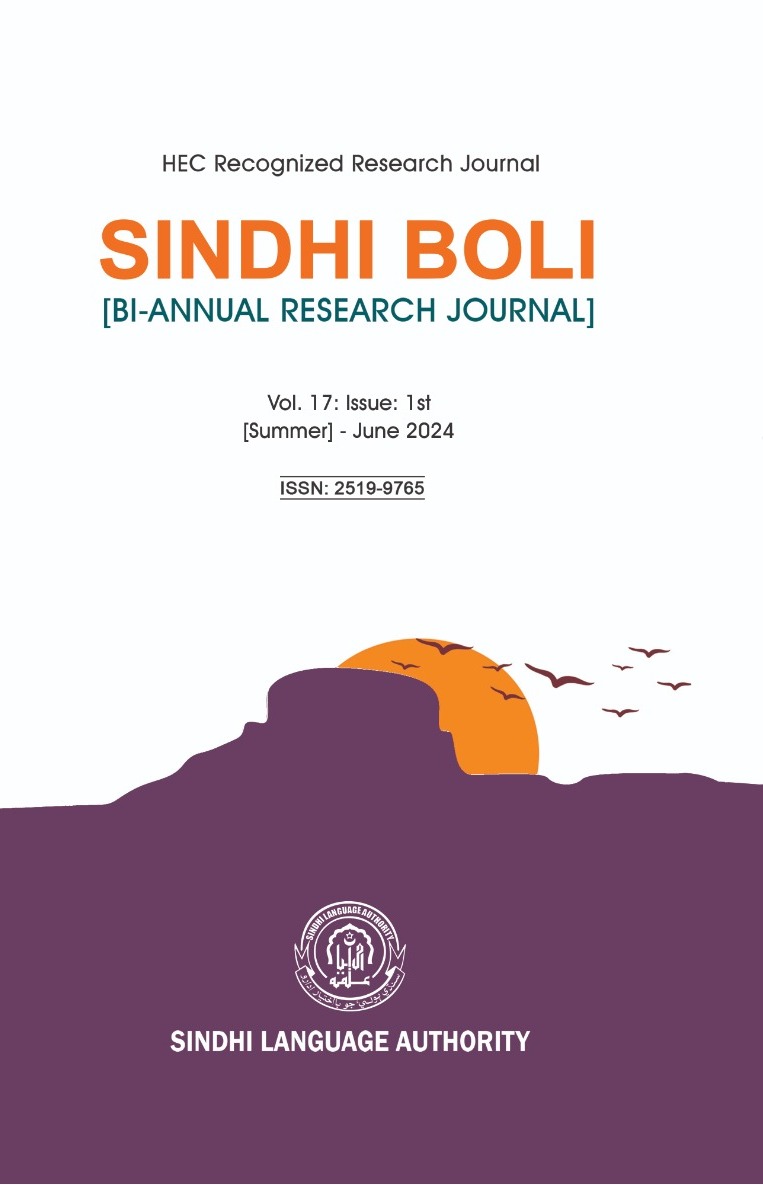The first ever Educational and Literary Movement in Sindhi Literature
Abstract
Abstract
Sindh has an ancient history that has spread over the centuries. The history of Sindh kept changing but the civilization of Sindh has maintained its distinct character and identity. In this regard, it may be pointed out that the history of the literature of Sindh is also spread over centuries and has a distinct character and place. In that respect, 1500 to 1843 period is regarded as the classical period of Sindhi Literature, which mainly represents the central role of the Sufi poets like Kazi Kadan, Shah Karim, Shah Latif, and Sachal Sarmast. In Sindh, the influence of Persian language from Arghun dynasty (1520-1555), Tarkhan dynasty (1555-1592) to Mughal Period (1592-1700), and also in the Kalhora Dynasty (1700-1782) changed the minds of Sindhi scholars. In the "Golden Age" of the Kalhora period, the poetic period called 'Kabit in Hindi of the lines ending in ‘Aliful-Ishba’, was made popular by Makhdum Abul Hassan of Thattvi, Makhdum Mohammad Hashim, Makhdum Ziauddin, Makhdum Abdullah Mondhiro, and other group members. They revolted against the undue and excessive pressure of the Persians in terms of language, literature, and education. This research paper demonstrates that it was the first-ever movement in the history of Sindhi Literature and language, which brought purposeful results in the history of Sindh. They wrote important books on the principles and injunctions of Islam which still continue to be the reference and basic source books. In this research paper, I highlight this movement’s prevalence whom I have identified as the first-ever educational and literary movement in the history of Sindh.
Keywords: Sindhi Literature, History, Literary movements.
Downloads
Published
Issue
Section
License
Copyright (c) 2025 Copyright ©SINDHI BOLI All Rights Reserved

This work is licensed under a Creative Commons Attribution-NonCommercial 4.0 International License.
Copyright provides the exclusive legal right to produce, reproduce, and publish original research work. As the Sindhi Boli Journal is an open-access journal, authors retain ownership of the copyright for their articles.
Under the journal's open-access license, users are allowed to download, print, extract, reuse, archive, and distribute articles, provided that proper credit is given to the authors and the source of the work. This license ensures that the author's research is widely accessible and can be included in any scholarly archive, maximizing its reach and impact.
For more information on reuse rights or permissions, please contact the editorial board.
Sindhi Boli Journal supports the free exchange of ideas and encourages academic and educational use of its material under fair use guidelines, provided that appropriate credit is given to the original authors and the journal.
Copyright is the exclusive legal right to produce, reproduce, and publish original research work. As the Progressive Research Journal of Arts and Humanities (PRJAH) is an open-access journal, authors are asked to retain ownership of the copyright of their articles. The license permits any user to download, print out, extract, reuse, archive, and distribute the article, so long as appropriate credit is given to the authors and source of the work. The license ensures that the author's article will be available as widely as possible and that the article can be included in any scholarly archive.


